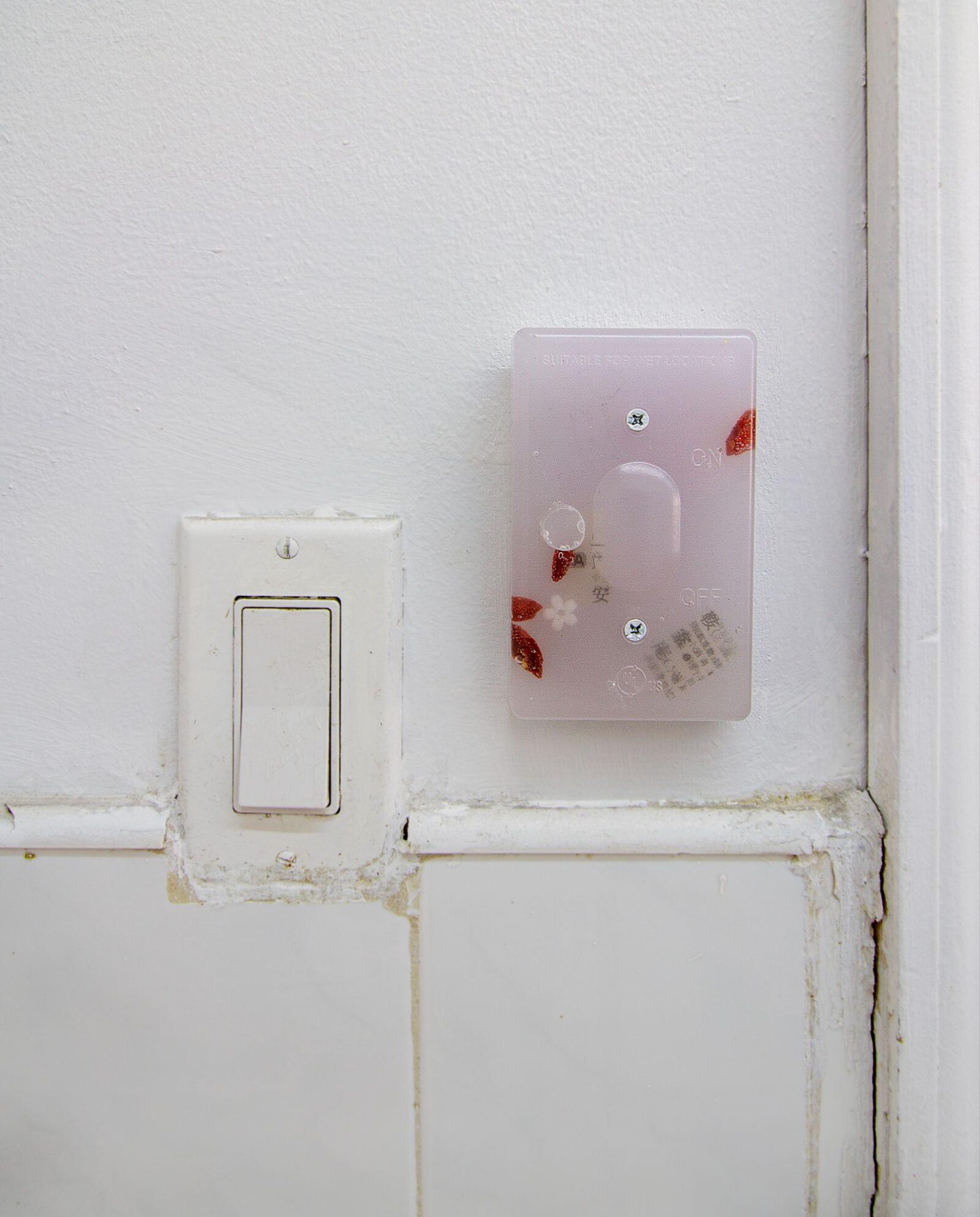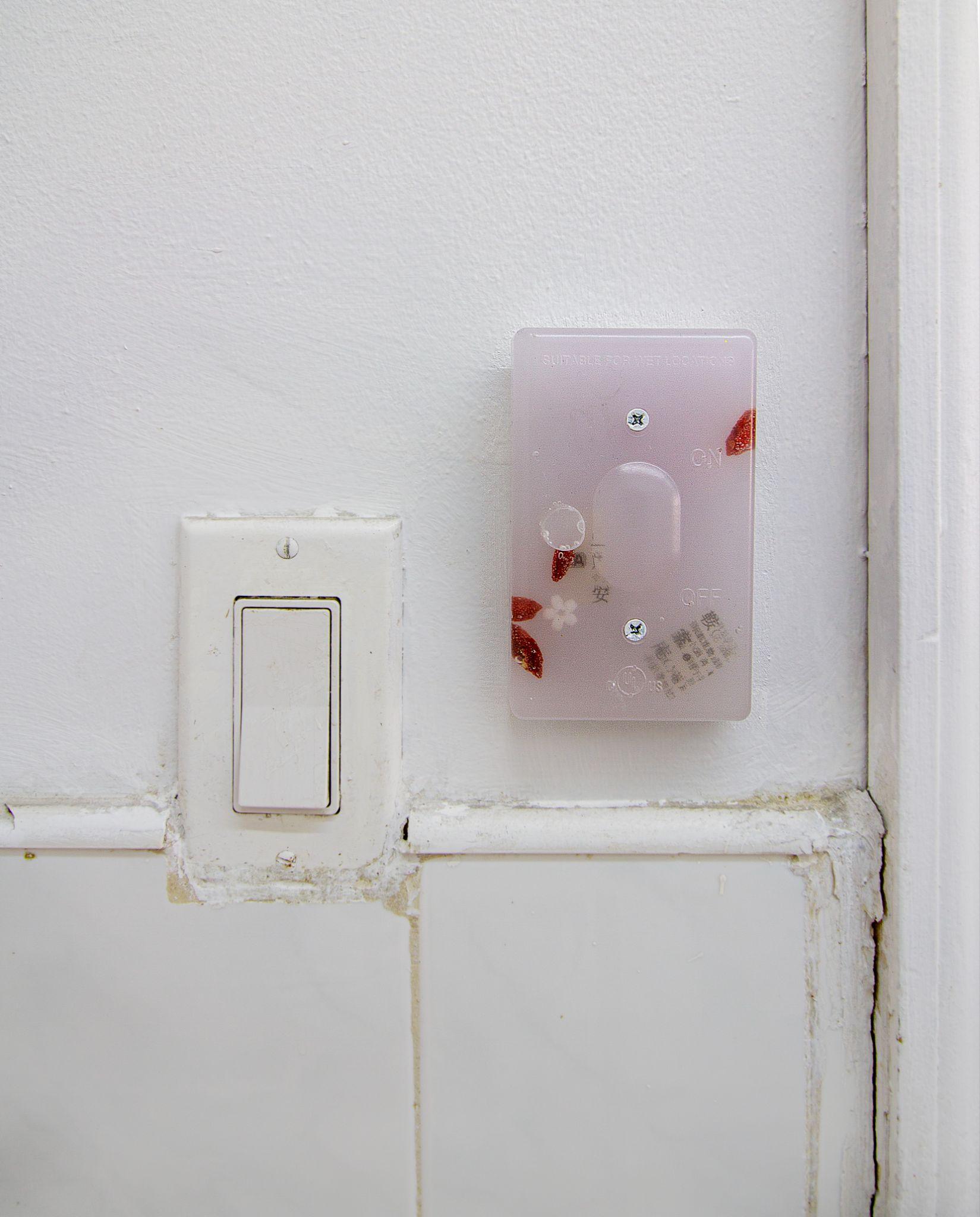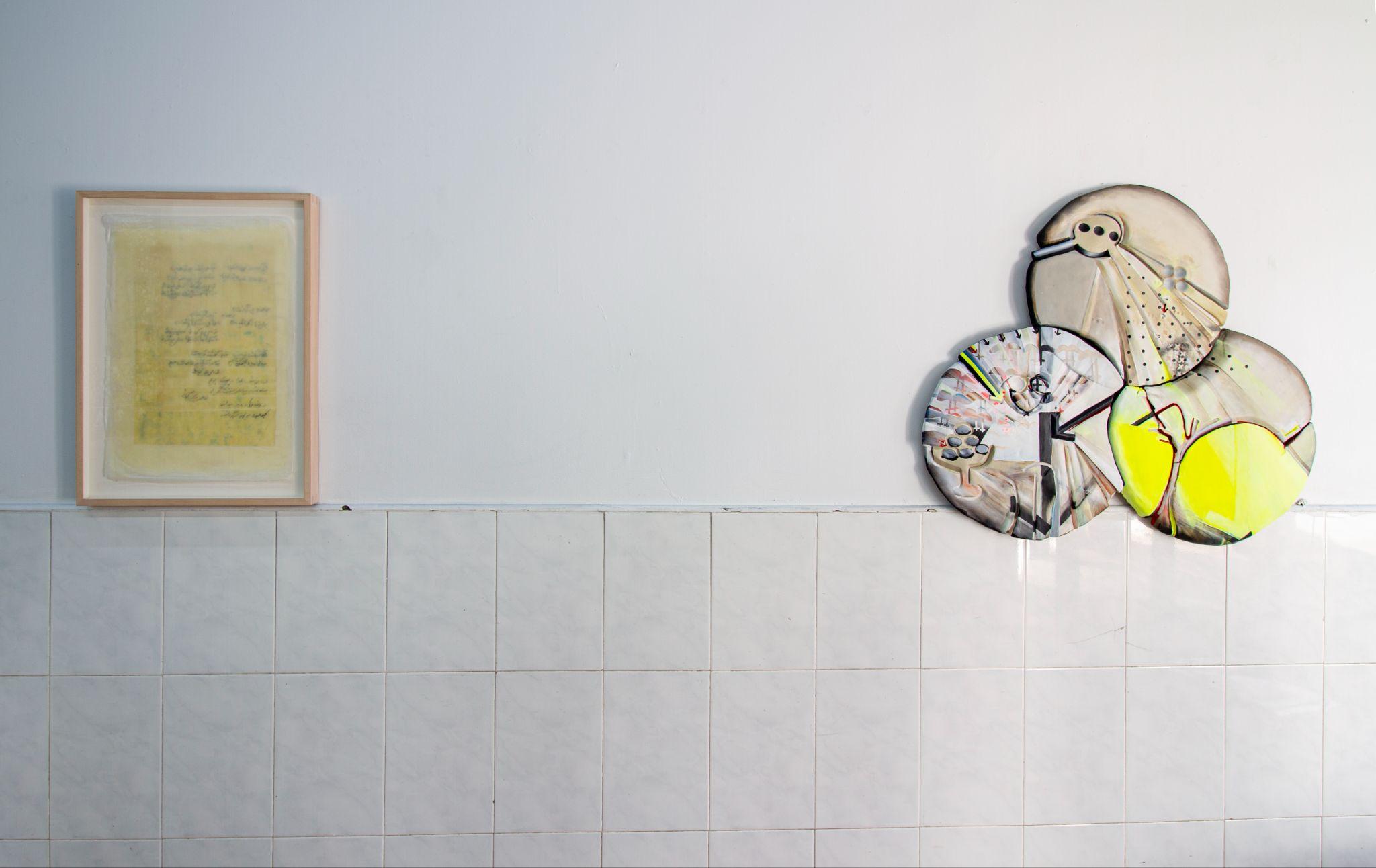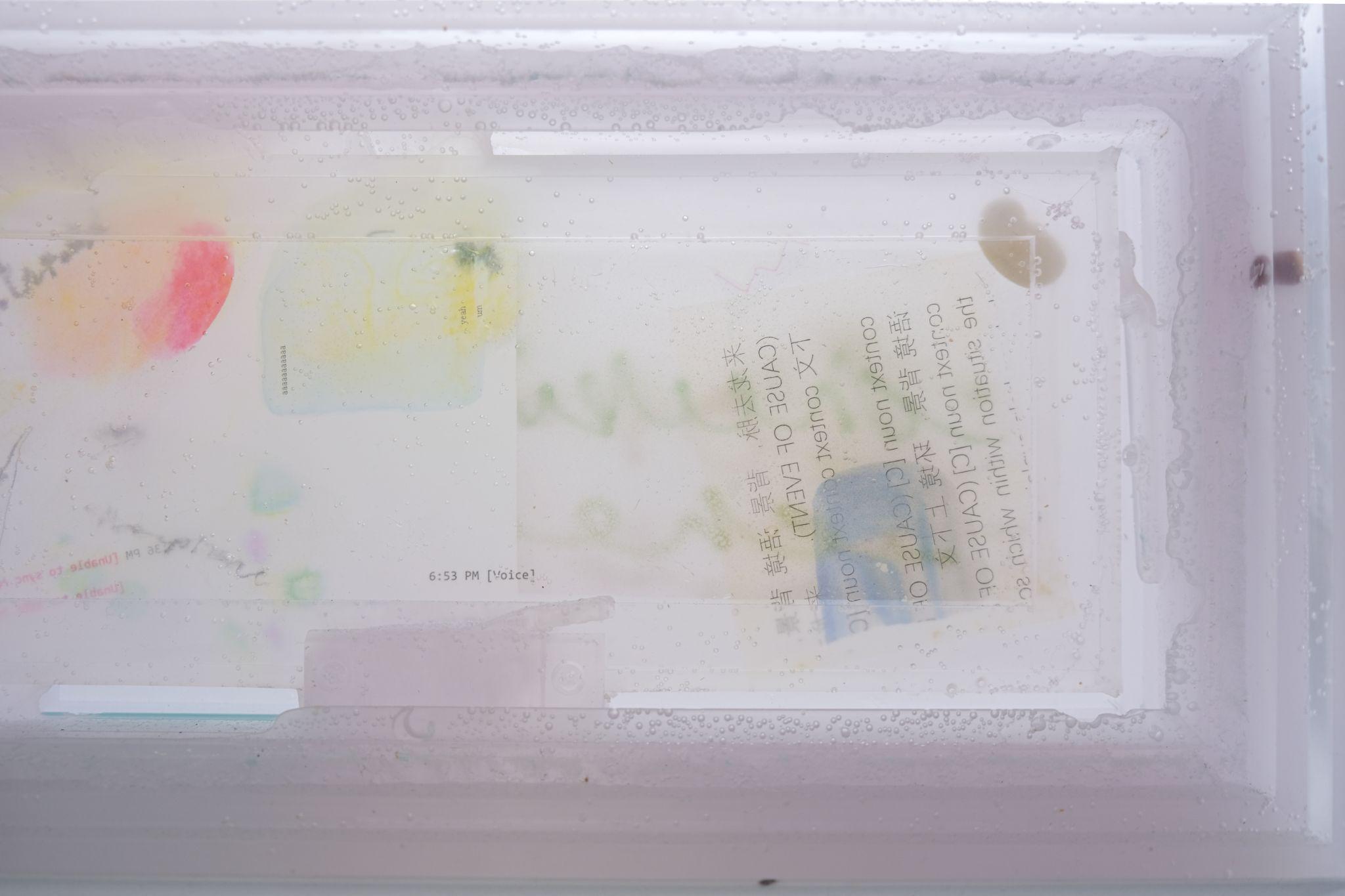Words Are Material in Tianyi Sun’s Sculptures at Below Grand


Ink Stone [an] / 砚 [甘] (2025), with its placement, makes dull the electrifying elements of learning a language—realizing that one is mastering a language is not like the turn of a switch, but rather a slow flow of electricity. A muddled, reduced current. The artist has inside the “stone” encapsulated memories, lotus root powder and bits of text from a Chinese dictionary, recalling the taste, smell, and textures of her life—sensations which can be described but not experienced through words. Throughout the gallery, like interventions, four more of Sun’s resin sculptures surprise. All titles respond to the theme of language. Future Tense and Past Tense, for instance, is installed up ahead upon entering, close to the ceiling. Look up and look back. The artist has put a piece of Chinese white bread in it. What does it taste like? I wonder.
“When existing within multiple languages, it is a process of acquiring, learning, gaining, but also forgetting, abandoning, and losing,” Sun shared with Cultbytes. Wonderbread, Chinese white bread, and the Swedish version, Jättefranska, are all the same type of product—industrially produced square white bread—but they are worlds apart in taste, smell, and texture. Highlighting these differences, but in language, Sun draws from unexpected parallels and her work ask us to consider that when we speak in new languages, our perspective irreversibly changes. Sun has delivered talks on her unique perspective on technology and language at Pioneer Works, Parsons, ArtCenter College of Design in Los Angeles, and the Central Academy of Fine Arts in Beijing. Her interdisciplinary practice spans sculpture, film, performance, and installation, often incorporating emerging technologies to explore how language, value, and authenticity are mediated through material and technological systems. Sun’s institutional exhibitions include Los Angeles Municipal Art Gallery, Parsons School of Design’s Sheila C. Johnson Design Center, and New York’s Artists Space, and internationally at Rockbund Art Museum in Shanghai.

Iranian artist Golnar Adili centers much of her work on her father’s handwritten archive—he lived in the U.S. while she grew up with her mother in Iran—of letters to his wife and daughter, but also ones pertaining to art and political activism. In To Ey Pari Kojayee, the artist has copied and embalmed the lyrics of a classical song from his archive. Her work materializes language, bringing it not only form but also texture. Lara Karadogan’s oil painting Venn Diagram, 2025, evokes ancient clay tablets with imagery based on a triangulation of words in Spanish, English, and Turkish. Decipherable for the trilingual viewer, they are a play on association.
Language also has the potential for transportation; mastering a new language, dialect, and expanded vocabulary can aid in traversing class and geographical borders or offer access. Manal Abu-Shaheen photograph Kate Winslet (2016) shows a streetscape of Beirut, with the famous actress Kate Winslet on a billboard, evoking the film medium’s deep-seated relationship to translation: entire industries exist within dubbing and subtitling. What happens to Winslet’s characters as they are translated? Subtle cultural idiosyncrasies are bound to emerge.

The exhibition’s thoughtful curator Aparna Sakar shared with Cultbytes that she scaffolded the show around how moving between languages and places is present in the various artists’ works, and for Sun, the digital is a language—and, therefore, also a place. She continues, “Sun’s practice excites me because she deals with friction and distance between languages in an expanded sense. I find her work both impressively analytic—as in, dissecting how our world is structured—and poetic.” In a search for meaning, Sun weaves through materiality and discourse, erasing boundaries between digital and physical life. An approach that mirrors how we live, mentally attached to our devices.
There is also something physical in language; Sun’s delicate and cute resin pieces skillfully bring this to the fore. I took extra note of her work as I have followed her artistry for several years—in her sculptural, performance, and installation work that with digital technology, she has explored AI and language models in thought-provoking ways. Adding to a growing discourse of artists and scientists taking a kind and sometimes whimsical approach to the encompassing technology. Overall, her exploration of language is astute: her work shows that it can distort, bypass, and push up against, and it is felt in the body.
You Might Also Like
QWERTY, Flirty, Crying: Four Internet Artists Take on Reality
The Immigrant Artist Biennial’s Central Exhibition Relocates Regional Tensions
What's Your Reaction?
Anna Mikaela Ekstrand is editor-in-chief and founder of Cultbytes. She mediates art through writing, curating, and lecturing. Her latest books are Assuming Asymmetries: Conversations on Curating Public Art Projects of the 1980s and 1990s and Curating Beyond the Mainstream. Send your inquiries, tips, and pitches to info@cultbytes.com.

